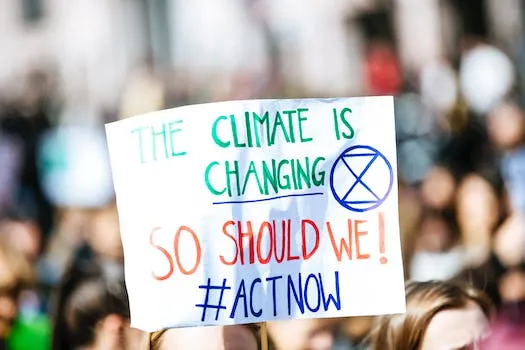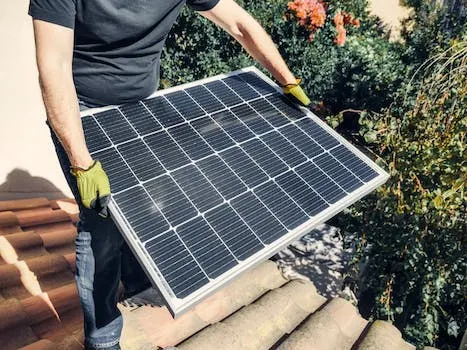
What Are Carbon Offset Credits and How Do They Work?
Carbon offset credits are a way of reducing your individual or business’s carbon footprint by investing in projects that help reduce the amount of carbon dioxide in the atmosphere. In this article, we will explore what carbon offset credits are, how they work and why they are important. Carbon offsetting is an accounting mechanism that helps to balance out pollution levels. It involves directing funds to projects that reduce global emissions and buying carbon offsets to decrease one's own carbon footprint. A carbon offset is a credit which can be purchased to compensate for emissions made elsewhere, such as through the reduction or removal of greenhouse gases or increasing storage through land restoration or tree planting. This article will explain how these credits work and their role in addressing climate change globally.
What are Carbon Offset Credits?
Carbon offset credits are a form of currency that represent one metric ton of carbon dioxide (CO2) that has been removed from the atmosphere. They are bought and sold on the carbon market and are intended to be used to reduce the environmental impact of activities that produce CO2, such as burning fossil fuels. Carbon credits, or offsets, are permits allowing holders to emit a limited amount of carbon dioxide or other greenhouse gases. The goal is to reduce all or a portion of the costs associated with emissions that the public pays for, such as taxes and fees. A carbon offset credit is a transferrable instrument certified by governments or independent certification bodies representing an emission reduction of one metric tonne of CO2 equivalent (CO2e).
According to Ecosystem Marketplace, in 2018 the market for voluntary offsets came close to $300 million and traded almost 100 million metric tons of CO2e. Carbon offsetting is achieved through projects which reduce emissions or sequester carbon such as planting trees or investing in renewable energy sources. These projects can then be awarded with credits which can be bought and sold on the carbon market by companies looking to compensate for their own emissions elsewhere.
A key benefit associated with buying these credits is that it allows companies who have already reduced their own emissions beyond what was required by law an opportunity to monetize those efforts while also helping other organizations meet their own emission reduction goals more quickly than they would have otherwise been able too without them. This helps create incentives for businesses who may not have had any prior interest in reducing their environmental impact but now see it as an opportunity for financial gain while also doing something positive for society at large.
How Do Carbon Offset Credits Work?
Carbon Offset credits are a way of trading carbon emissions between countries or regions. Companies and individuals purchase credits to offset the emissions they produce, creating a market in which these emissions can be bought and sold. Carbon credits are tradable units of one metric ton of carbon dioxide, allowing emitters to reduce their own emissions by purchasing them from other sources.
Voluntary carbon markets allow companies to address unavoidable emissions by Purchasing carbon credits from projects that have removed them from the atmosphere. These certificates represent 1 ton of carbon dioxide removed from the environment, providing an economic signal for emitters to decide whether they should reduce their own emissions or purchase offsets instead. This is known as the "carbon market," where more than actual emission units can be traded and sold under the Kyoto Protocol's Clean Development Mechanism (CDM).
The CDM allows industrialized countries with emission reduction commitments under Kyoto to invest in projects that reduce greenhouse gas (GHG) emissions in developing countries as an alternative way of meeting their targets. By investing in these projects, companies can earn Certified Emission Reduction (CER) units which can then be used as offsets against their own GHG emission targets or sold on international markets such as European Union Emissions Trading System (EU ETS).
Carbon offset credits provide a way for companies and individuals to reduce their environmental impact while still being able to continue operations without having to make drastic changes. By investing in these projects, businesses are able to contribute towards reducing global GHG levels while also helping developing nations meet their climate goals at the same time.
Why are Carbon Offset Credits Important?
Carbon offset credits are an important tool for businesses and individuals to reduce their carbon footprint. By investing in projects that reduce emissions, companies and individuals can contribute to the global effort to reduce CO2 emissions. Carbon credits, also known as carbon offsets, are permits that allow the owner to emit a certain amount of carbon dioxide or other greenhouse gases. With a carbon offset, a business, a government, or an individual can pay someone else to cut or remove a given quantity of greenhouse gases. This helps create economic incentives for investments in renewable energy which can help reduce global emissions.
Carbon offset schemes also allow individuals and companies to invest in environmental projects around the world in order to balance out their own emissions. A carbon offset is essentially a credit that is purchased by someone or an organization with the goal of decreasing its overall carbon footprint. When the number of credits obtained is equal to the amount of GHG emitted then it's considered “carbon neutral” meaning no net increase in GHG has occurred from those activities.
While it's critical for people and businesses do what they can do decrease their own emissions it's difficult for most people and organizations achieve zero emission levels without assistance from outside sources such as purchasing carbon offsets credits which helps shift some of burden back onto those who are responsible for emitting GHGs while avoiding dictating how much each person should be allowed emit on their own terms . Carbon offset credits provide an incentive for businesses and individuals alike by allowing them purchase these permits so they can continue with their activities while still reducing their environmental impact at same time .
Conclusion
In conclusion, carbon offset credits are an important tool in the global effort to reduce emissions and combat climate change. Carbon offset credits are permits that allow the owner to emit a certain amount of carbon dioxide or other greenhouse gases. Offsets are an accounting mechanism that balance out pollution by allowing individuals and companies to invest in environmental projects around the world. Carbon offset schemes also place a price on GHG emissions, which is essential for internalizing the external cost of climate change. By investing in projects that reduce emissions, companies and individuals can reduce their environmental impact and contribute to this global effort.










